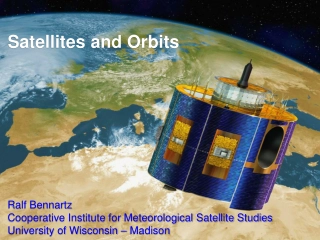Understanding Satellite Orbits and Motion
Explore the concepts of satellites, orbits, period, and angular velocity in relation to circular motion. Learn how these factors affect the motion of objects in space and understand the relationship between linear and angular velocity. Discover the impact of mass on an object's orbit and how it influences its trajectory.
Download Presentation

Please find below an Image/Link to download the presentation.
The content on the website is provided AS IS for your information and personal use only. It may not be sold, licensed, or shared on other websites without obtaining consent from the author. Download presentation by click this link. If you encounter any issues during the download, it is possible that the publisher has removed the file from their server.
E N D
Presentation Transcript
WARM UP 1) What is a satellite? 2) What does orbit mean? 3) What does Period mean? 4) What does angular velocity mean? 5) If the angular velocity is to remain constant, how does the linear velocity affect the radius of circular motion? 6) If the moon were twice as massive, how would that change it s orbit?
What is a Satellite? A satellite is a projectile that revolves around another body in free fall motion.
What does orbit mean? Orbit means the curved path to go around another body usually under a gravitational attraction.
What does Period mean? The period of an object orbiting another object is the time for one complete revolution.
What does angular velocity mean? Angular velocity is how fast the angle changes as one body revolves around another. It is the change in radians per the change in time.
If the angular velocity is to remain constant, how does the linear velocity affect the radius of circular motion? The radius is directly proportional to the radius. v= r
If the moon were twice as massive, how would that change it s orbit? There would be no change. The mass cancels out of the equations.























